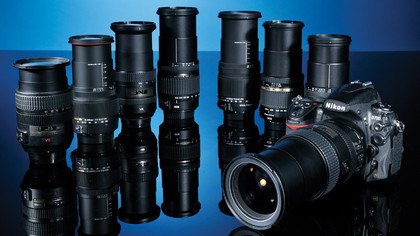Best superzoom for Nikon DSLRs: 8 tested
With their colossal zoom ranges, superzooms offer unparalleled versatility

Beautifully built, the Nikon 18-200mm f/3.5-5.6G AF-S DX ED VR II packs in plenty of top-level features, making it our winner. The ring-type ultrasonic autofocus is fast, supremely accurate and practically silent.
Handling is further refined by full-time manual focus override, which is shared with Nikon's full-frame superzooms in the group.
It's not perfect, as there's a little zoom creep, and the image sharpness measured in our lab tests could have been better at the 200mm focal length. Out and about, however, it delivered the best overall image quality time after time.
For maximum zoom range on APS-C-format cameras, the Sigma 18-250mm OS is a better bet than the Tamron 18-270mm VC. Both feature ultrasonic, motor-driven autofocus systems, but the Sigma's is faster.
The Sigma's sharpness is also better, at least at either end of the zoom range, while distortions are better controlled and colour fringing is generally less of a problem.
For full-frame cameras, the Nikon 28-300mm and Tamron 28-300mm are direct competitors. The Nikon is more advanced, with ring-type ultrasonic autofocus, but the Tamron only has a basic electric motor that's slow, noisy and more prone to hunting in dull light. The Tamron's sharpness is better at 300mm, but the Nikon delivers better image quality.
Overall, our full-frame choice is the Nikon 24-120mm. Yes it lacks outright telephoto reach, but the extra wide-angle coverage is useful and offers a step up in image quality. The lens is also good for APS-C-format cameras, if you're planning on upgrading from APS-C to full-frame.
Get daily insight, inspiration and deals in your inbox
Sign up for breaking news, reviews, opinion, top tech deals, and more.